

With his shock of silver hair and professorial glasses, Robert Owen gives the impression of an outlandish scientist. His obsessions range from the scientific to the spiritual, from the mathematical to the pure aesthetics of draughtsmanship. Despite the minimalistic appearance of his work, Owen manages to thread together science, alchemy, mysticism, geometry and art itself as subject matter.
While these works—presented with reductive, minimal geometry—may appear to possess a degree of post-modern cool, they are also loaded with multiple levels of information. Writer George Alexander describes Owen as fitting into a 'dissident pantheist–materialist tradition, concerned with actual process, with the structure and laws of the nodal points in material change. They recall the secret world of craft fraternities and mystery groups who are often prosecuted as counterfeiters (lead to gold) and with meddling in manners strictly reserved for the State or the Church'.1 Thus Owen, with his combination of geometrical ideals and precisely connected, self-fabricated items, becomes both polymath and alchemist.
Owen's evolution as an artist is far removed from that of his contemporaries in Australia. Owen studied drawing with John Olsen and then, in 1963, travelled to Greece for a planned three-week holiday. He returned twelve years later, having travelled widely and spent considerable time studying and working in London. On the isle of Hydra he discussed everything from Wilhelm Reich to Zen Buddhism with George Johnston, Leonard Cohen and others. In London he fell in with the British Constructivists who were influenced by the artists of the Russian Revolution. The British artists Owen spent time with shared a dedication to an abstract art that was non-illusionistic, constructed from geometric forms with dynamic compositions founded on systems such as the aesthetic mathematical ideal of the golden section.
Owen returned to Australia in 1988, still intrigued by the major theoretical shifts in science: chaos theory, artificial intelligence, Turing machines, Gödel's theorem and other arcane elements of physics and mathematics that were becoming common parlance in cultural circles at the time. Artists, like scientists, spend their lives questioning their environment, and challenging theories from all disciplines infiltrated the art world dramatically.
Owen was excited by the challenges raised by new models of order and disorder in nature. 'Information is spreading faster than the electronics that carries it,' he said in 1990.
It reminds me of Sheldrake's work on morphogenic field theory and David Bohm's theory of implicate order; something's in the air ... Evolutionary cosmology and chaos theory, this is terrific, for we must be able to produce and grasp new perceptual and conceptual relationships, or remain forever excluded from what might be a higher stage of knowledge and consciousness.2
The five Untitled (ghost tantra) works (1994) were designed with high-end graphics software. 'Building models on a computer is much like building them in your mind—except you get printouts,' Owen declared. 'For me it's an opportunity to speed up and extend certain processes—it's a category of tool; a different space to operate in.'3
The results work as both sculpture and drawing, creating their own abstract environment. In this, perhaps, Robert Owen has found a new model for drawing practice, one that grows organically out of the wall to gradually take over the gallery.
- Ashley Crawford
Robert Owen is represented in Australia by ARC ONE Gallery, Melbourne.